#jarilo
Explore tagged Tumblr posts
Text

i thought it'd be funky if i had different designs for him,,
#i'm gonna do one for morana as well :D#then i want to try and draw some more gods#jarilo#slavic mythology#art#digital art#just made him look slightly more tired. and just;; down.#probably gonna exaggerate it further lmao
531 notes
·
View notes
Text

Thank you for the question @newbiepagancat ! I’ll give you a direct answer and a broader view answer.
Direct answer: The general theme of the myth was reconstructed by slavists on the basis of folk songs, folktales and comparative mythology, there is no one concrete historical source. The names of gods and the storyline connecting multiple myths are an educated speculation by slavists of yore. The minute details are typically added by neopagans as they’re almost impossible to reconstruct.
The Russian philologists Ivanov and Toporov found (mainly on the tradition about Zeleni Jurij) traces of the principal myth of Perun and Veles, linking Jurij/Jarylo with the Balto-Slavic Jarovit, a deity of fertility, who was initially worshipped on April 15. Furthermore, Radoslav Katičić wrote extensively on Jurij’s myth among the Slavs and on the duel between the Thunder God with a dragon. Both Radoslav Katičić and Vitomir Belaj share the opinion that Jurij/Jarylo is the son of Perun and thus central to the pre-Slavic vegetation and fertility myth. Jurij was taken by envoys of Veles to the land of the dead from which he returned to the world of the living in spring. As a harbinger of spring, Zeleni Jurij is also connected with the circular flow of time and with renewal. According to Katičić’s reconstruction of the myth of Zeleni Jurij, the mythic story recounts how young Jurij rides his horse from afar, from the land of eternal spring and the land of the dead – from Veles’ land – across a blood-stained sea, through a mountain to a green field. (…) At the end of his journey, Jurij arrives at the door of Perun’s court to marry Perun’s daughter, (his own sister) Mara. Together with the sacrifice of the horse, the hieros gamos ensures the growth and fertility of plants. Some Slovene folktales and songs also mention an incestuous relationship between a brother and a sister, which is the reminiscence of the sacred marriage already mentioned in the myth of Kresnik. The sacred marriage is therefore also connected with Zeleni Jurij.
- Supernatural beings from Slovenian myth and folktales by Monika Kropej
Mikhailov summarized Ivanov’s and Toporov’s reconstruction of the basic myth by describing that the thunder god Perun, who dwells in the sky on the top of a mountain, persecutes his enemy, who has the form of a snake and lives below on earth. The reason for their conflict is that Veles stole cattle and people, as well as the Thunderer’s wife in some versions of the story.
- René Girard’s Scapegoating and Stereotypes of Persecution in the Divine Battle between Veles and Perun by Mirjana Borenović
Broader worldview answer: There are some common mythological themes that exist in one form or another among countless different cultures and peoples, adjusted to fit the local gods and their broader stories.
The God of Thunder fights The Serpent of the Waters. They have to fight - be it as Perun and Veles, as Thor and Jörmungandr, as Zeus and Typhon or as Marduk and Tiamat. The detailed reasons will vary but will make sense locally. The older and simpler reason is likely that we need a good justification for the changing of the seasons.
The Death will always take away someone’s Loved One, sometimes that Loved One will be a child, since that makes coping with the situation particularly difficult. That’s just what death does - be it as Veles and Yarilo or as Hades and Persephone. Bonus points for explaining the seasons changing too.
So let’s say you’re a slavist or a neopagan desperate for a coherent body of Slavic myths but lacking one. All you have to work with are some fleshless skeletons of myths, painstakingly glued together from random bones that you found here and there. Truth be told you only managed to get this far because they’re real classics of the genre and other cultures tend to have similar ones too. Let’s introduce the skeleton gallery in play here:
The Thunderer and the Serpent are fighting (described more in depth here),
The God of Death/Underworld abducts a child (described in the quotes above),
The Spirit of Vegetation has to die - creative sacrifice/murder (explained shortly here),
The Fire and Water need to marry at Midsummer - magical incest temporarily allowed (explained in this post, if it’s too long just read the last quote and the tldr).
(You might notice pretty much all those myths are centered around vegetation, what makes plants grow, and people needing to have food. Two first skeletons do a decent job of explaining change of seasons and the reason for seasonal coming of rains, that are needed for the fields to grow; two last ones are related to rituals that are supposed to ensure that land stays fertile/there’s enough sun and water so that grain grows and we can avoid starving.)
Ok, so let’s say you’re a slavist or a neopagan desperate for a coherent body of Slavic myths. What is the optimal way to connect the dots here?
Perun and Veles fight. Why are they fighting? Multiple reasons but the biggest one is Veles stealing something that rightfully belonged to Perun. What did he steal? Well the myth works perfectly if it’s a) a child and b) a spirit of vegetation. This fits both Morana and Yarilo and I saw fans of both versions, but let’s go with Yarilo here. Because of a flower, a folk song and an old chronicle Yarilo/Yarovit, the spirit believed to be one of vegetation, life, spring, sun etc. has to marry the spirit of vegetation, water and death, that miiiiiight also be his sister. How the fuck do you marry your own sister? Well you got abducted and separated at young age, but as The Spring, The Embodiment of Sprouting Seeds and maybe also The Sun Child, Yarilo (born at Midwinter) will come out from the Underworld uscathed as a young adult and meet a girl who he fails to recognize as his sister and marries at Midsummer (part of fertility ritual for good harvest). Anyway tragedy follows, could be murder, could be suicide, either way it has to be death.
Why? Because that’s what makes sense, the most optimal way to put together the puzzle pieces that we currently have. Does that mean that’s exactly what Ancient Slavs believed? No, but a) we don’t know for sure what they believed and will likely never find out for sure, b) they probably believed bunch of different, conflicting stories depending on the region.
Obviosuly speculating slavists are much more light-handed than speculating neopagans. The slavists will usually let you know which parts they added, why they hold this particular belief, what purpose this story may serve, what other authorities support their hypothesis, and of course, that nothing is for sure and this is merely a hypothesis. Neopagans are rarely this kind and forthcoming.
Have a lovely day!
Zarya
#slavic paganism#slavic mythology#slavic folklore#Perun#Veles#Yarilo#Jarilo#Morana#Marzanna#Marena#Pls don’t tell my boss what I’m doing at work#asks
46 notes
·
View notes
Note
So like weird question but.. who can you worship Greek gods and the Christian God or Jesus and Yarylo?? It makes no sense to be honest. Those gods are from completely DIFFERENT religions.
Hi there, sunshine! ☀️
To answer your question in its simplest form, I believe it's because I do not and never have gone to church. I combine pagan practices with Folk Catholicism, in which the centre of the faith is based around the home and hearth instead of the church.
Personally, I find the concepts and philosophies of paganism and Catholicism very compatible and easy to blend. As Catholicism is the earliest form of Christianity (and I believe the truest), I believe it has pagan roots. It grew directly out of the pagan era. Taking the church out out of the practice makes those origins more apparent, to me at least.
Not that I'm saying Catholicism is a pagan faith, simply that it is the closest branch of Christianity to paganism, both in practice and chronology. This helps bridge the divide that has grown between the faiths over the millennia.
Deities also fill different roles depending on their domains. Yarylo, for example, is a domestic deity. I pray to him for matters regarding my home, family, and the prosperity and protection of my household. Jesus, on the other hand, fills the role of a teacher in my practice. He is my saviour and covers me with his Blood, and I tend to pray to him for guidance through life.
As for the practical considerations, I simply incorporate elements of worship from both paganism and Catholicism. For example, I might do a pagan style ritual at my altar with incense, offerings, etc, and say a traditionally Catholic prayer. I base a lot of what I do in historically accurate practice (mostly Hellenic) and traditional Catholic practice, and take what I like from each, creating a sort of hybrid.
I hope I've covered some of the basics here and answered your question well. Thank you for asking! Feel free to send more asks my way if you would like.
Khaire! ☀️
#asks#answered asks#pagan#paganism#christopagan#christopaganism#folk catholic#folk catholicism#slavic pagan#slavic paganism#polytheism#polytheist#jesus christ#yarylo#jarilo#helpol#hellenic pagan#hellenic paganism
38 notes
·
View notes
Text

54 notes
·
View notes
Text


― Slavic Gods, Sprits and Creatures Aesthetics, Part I.
''The first of the gods to notice Jarilo's return to the living world was Morana, a goddess of death and nature. The two of them would fall in love and court each other through a series of traditional, established rituals, imitated in various Slavic courting or wedding customs. The divine wedding between brother and sister, two children of the supreme god, was celebrated in a festival of summer solstice. This sacred union of Jarilo and Morana, deities of vegetation and of nature, assured abundance, fertility and blessing to the earth, and also brought temporary peace between two major Slavic gods. However, since Jarilo's life was ultimately tied to the vegetative cycle of the cereals, after the harvest (which was ritually seen as a murder of crops), Jarilo also met his death. Without her husband, however, Morana turns into a frustrated old hag, a terrible and dangerous goddess of death, frost and upcoming winter.''
#yarilo#jarilo#morana#moranna#marzanna#slavic gods#slavic#slavic folk#aesthetics#slavic folklore#pagan#paganism#slavic paganism#gods#deities
36 notes
·
View notes
Text

Yarilo 🤝 Persephone
#Yarilo#Jarilo#persphone#slavic mythology#Slavic gods#Slavic deities#greek mythology#Greek gods#Greek deities#spring and rebirth besties#Greek goddess#Greek goddesses#Hades#veles
26 notes
·
View notes
Text
Vasant: Nothing feels better than winning Monopoly. Not love, not sex, not free pizza, nothing!
Vesna: I’m sorry, have you tried pizza?
Vasant: Yes, and it doesn’t compare to owning half the board and watching the light die from your friend’s eyes as you take their money and feel your friendship slowly deteriorate.
Yarilo: I like you.
#we love to see unhinged vasant#mythology memes#incorrect quotes#incorrect mythology#hindu mythology#hindublr#incorrect mythology quotes#hindu gods#hinduism#vasanta#vasant#hindu myths#desiblr#desi tumblr#desiposting#desi tag#desi shit posting#desi side of tumblr#slavic mythology#slavic gods#yarilo#jarilo#vesna#slavic
23 notes
·
View notes
Text
trying to figure out anything on yarilo is like lowkey impossible why is this so hardddd
18 notes
·
View notes
Text

3 notes
·
View notes
Text
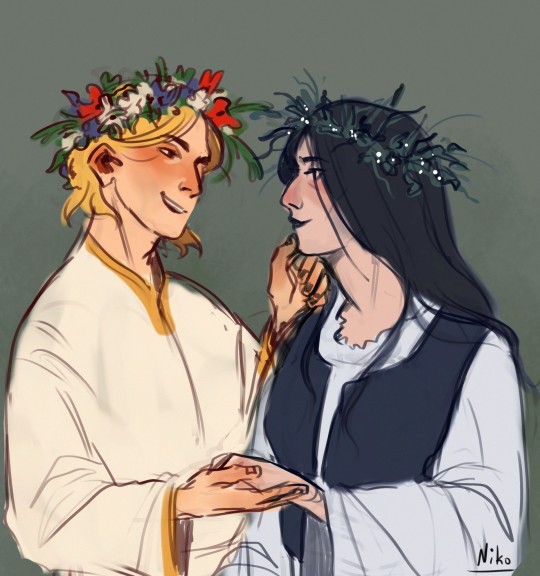
there's a version where jarilo is morana's consort (in the other version it's dažbog/dazhbog),, so here's them being together etc etc
#btw hope you don't mind me also doing slavic mythology hahaha i'm really enjoying myself :D#jarilo#morana#slavic mythology#art#digital art
546 notes
·
View notes
Text
Perun, handing out popsicles: Which flavor do you want? Jarilo: Blue flavor! Perun: Uh, you mean Blue Raspberry? Jarilo: Blue flavor! Blue flavor! Perun: Blue is not a flavor! Jarilo: BLUE FLAVOR!
#queue#mythology#slavic mythology#slavic gods#source: perchance generator#incorrect quotes#perun#jarilo
21 notes
·
View notes
Photo
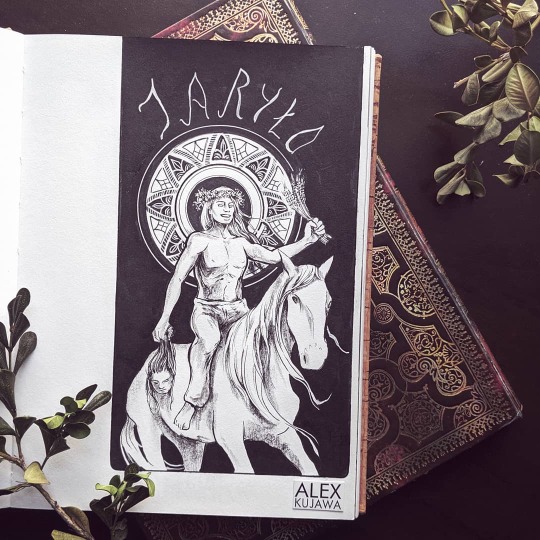
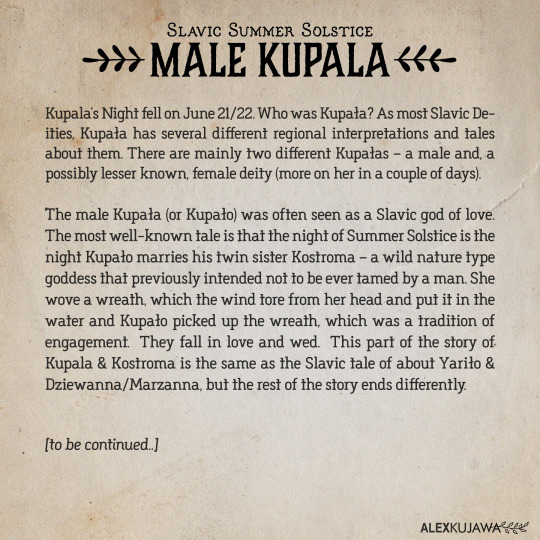
This is post 10 of 13 🌿🌿🌿 in my annual series on SLAVIC PAGAN SUMMER SOLSTICE that I like to expand in each year (and posting for the first time on tumblr).
Are you enjoying this series? Gimme a like, talk to me! I’d love to get back on tumblr if I know that people are actually seeing/enjoying my posts here.
🖤💀🌿 ___________________________ Image: ”Noc Świętojańska”, prints available on my Etsy
Interested in Slavic Mythology? Check out my illustrated folklore book 31 Slavic Beings of Myth & Magic on ETSY or Amazon.
#yarilo#jarilo#kupalo#slavic mythology#gerowit#kupala night#noc kupaly#summer solstice#midsummer#midsommar
12 notes
·
View notes
Photo
my family patron <333
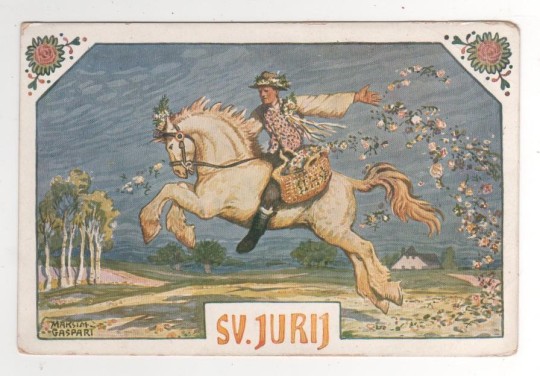
Slovenian post card depicting st. George as folk tradition understands him. He is bringer of spring and blooming flowers, substituting for fertility deity Jarilo. Author: Maksim Gaspari
723 notes
·
View notes
Text
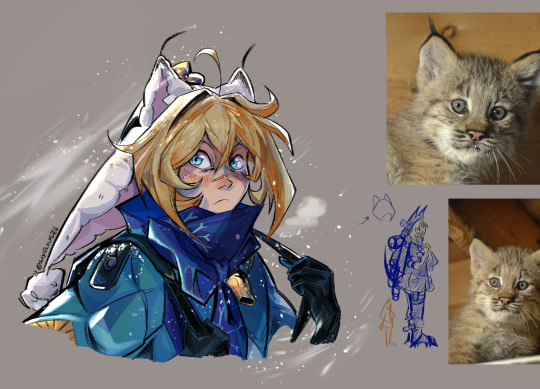
lynxy redesign !! wanted to adjust her a bit to better fit an actual explorer/survivalist used to subzero weather
#accentuated her lynx silhouette; maybe to ward off prey(?)#id imagine she often uses natural repellants and nonlethal methods of sneaking past jarilo's mutated fauna unless food is needed#like a botw/lara croft sort of deal with being a nomadic explorer#also made her outfit thickly insulated with proper ice climbing gear#idk i just love lynx hcs i bet shes protag-level capable of thriving off in the wild landaus are insane w their careers i swear#hsr#honkai star rail#hsr lynx#lynx landau
225 notes
·
View notes
Text
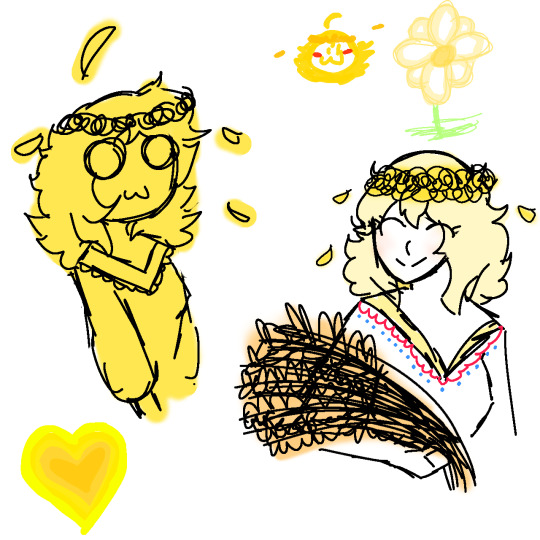
Female (gender-bend) Yarilo :333
#yarilo#Jarilo#slavic gods#slavic deities#slavic mythology#mythology#mythology art#genderbend#art#Blue-lotus arts#my art
14 notes
·
View notes
Text

VASANT and YARILO's love child :3
Model: Kacper Ostrycharczyk (thanks @tum-naam-sochlo-merese-ni-hora
#hindu mythology#hindu gods#vasant#vasanta#hindu myths#hinduism#hindublr#desiblr#desi tumblr#desi tag#desiposting#slavic mythology#slavic gods#yarilo#jarilo#vasant x yarilo#vasantblr
26 notes
·
View notes